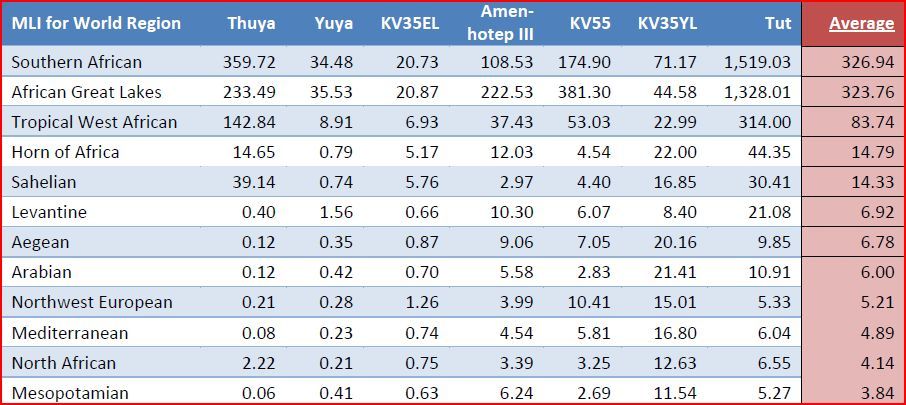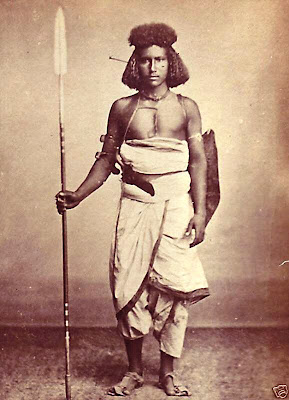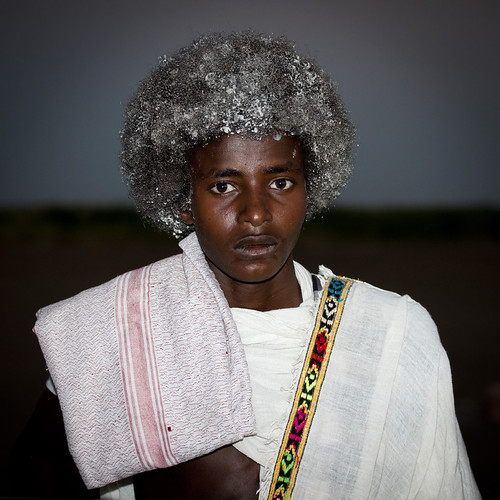Greeks and Macedonians
The Greeks didn't come into Egypt until a good 2500 years after Egypt was unified and after the 26th dynasty
Learn history breh

Greeks and Macedonians

I said before that there are depictions of Egyptians ranging from light to dark, but on average they were a reddish brown. Reddish meaning medium. Some are darker. You said they looked like lupita, and while I'm sure there were egyptians who favored her in appearance, I don't think we can say that was the norm.
Iron oxide is one of the most common minerals found on earth, and there is much evidence that yellow and red ochre pigment was used in prehistoric and ancient times by many different civilizations on different continents. Pieces of ochre engraved with abstract designs have been found at the site of the Blombos Cave in South Africa, dated to around 75,000 years ago.[4]
Paintings of animals made with red and yellow ochre pigments have been found in neolithic sites at Pech Merle in France (ca. 25,000 years old), and the cave of Altamirain Spain (ca. 15,000-16,500 BC). The cave of Lascaux has an image of a horse colored with yellow ochre estimated to be 17,300 years old.
According to some scholars, Neolithic burials used red ochre pigments symbolically, either to represent a return to the earth or possibly as a form of ritual rebirth, in which the color symbolizes blood and the Great Goddess.[5]
In Ancient Egypt, yellow was associated with gold, which was considered to be eternal and indestructible. The skin and bones of the gods were believed to be made of gold. The Egyptians used yellow ochre extensively in tomb painting, though occasionally they used orpiment, which made a brilliant color but was highly toxic, since it was made with arsenic. In tomb paintings, men were always shown with brown faces, women with yellow ochre or gold faces.[6]
Red ochre in Ancient Egypt was used as a rouge, or lip gloss for women.[7] Ocher-colored lines were also discovered on the Unfinished Obelisk at the northern region of the Aswan Stone Quarry, marking work sites. Ochre clays were also used medicinally in Ancient Egypt: such use is described in the Ebers Papyrus from Egypt, dating to about 1550 BC.
In Africa[edit]
Women of the Himba ethnic group in Namibia are famous for using a mix of ochre and animal fat for body decoration, to achieve a reddish skin color. The ochre mixture is also applied to their hair after braiding.[17]

Himba woman covered with a traditional ochre pigment

Just give up with that "reddish" crap already
That reads like some cac making excuses for why the Egyptians were brown and not white.

I would think these Egyptologist had an idea of the ethnic demography and the composition of egyptian society by using their own tools. Studying their language, tools, migration patterns, historic records from the Greeks and Macedonians and cultural symbolism that were apart of other surrounding empires, one can ascertain that egyptian were a mixed bunch. You don't have to go to fossil DNA to know that.
Discussion: Average MLI scores in Table 1 indicate the STR profiles of the Amarna mummies would be
most frequent in present day populations of several African regions: including the Southern African
(average MLI 326.94), African Great Lakes (average MLI 323.76), and Tropical West African (average
MLI 83.74) regions.
These regional matches do not necessarily indicate an exclusively African ancestry for the
Amarna pharaonic family. However, results indicate these ancient individuals inherited some alleles that
today are more frequent in populations of Africa than in other parts of the world (such as D18S51=19 and
D21S11=34).

You mean like you crying because Buddha had naps

Did you even read what I wrote, Greeks kept records of Egypt when they arrived. There must have been plenty of accounts of their physical features, culture etc. Greeks were known for their extensive profiling of empires and nations they conquered.The Greeks didn't come into Egypt until a good 2500 years after Egypt was unified and after the 26th dynasty
Learn history breh
Did you even read what I wrote, Greeks kept records of Egypt when they arrived. There must have been plenty of accounts of their physical features, culture etc. Greeks were known for their extensive profiling of empires and nations they conquered.


LmaoHere is a Namibian tribe using red dye



















AE was simply and mostly an Afro-Asiatic civilization with Nilo-Saharan affinities, anyone who says otherwise is simply misinformed.
Nilo-Saharans and Cush*tics are the same people by the way, Cush*tics are just Nilo-Saharans with more "Caucasian" affinities. Cush*tic languages originate in Southern Egypt/North Sudan where after a while, pastoralist Cush*tic groups spread to the Horn & Eastern Africa in general. They dominated the place which was formally inhabited by hunter gatherer groups and Omotics. Later on Semitic (From Southern Arabia) came to the Horn and some former Cush*tic speakers (mostly Highland Cush*tic similar to Agew languages) switched to Semitic with not much of a genetic admixture from South Arabians (It was mostly just a language shift). By the way, the Cush*tic continuum still exists to this day beginning from where the Languages originally spread (Northern Sudan/Southern Egypt). It starts with groups like Beja in the Red sea region of Sudan and Southern Egypt all the way to Eritrea (Beja, Saho, Afar, Bilen), Ethiopia (too long to list all), Somalia (Somalis) and Northern Kenya.
I suspect that there were probably a number of other Afro-Asiatic languages like Beja spoken in the Sudan which probably disappeared with the Arabiziation of the place.
IMO Lupita looks more like a Nubian. She is Kenyan, Luo (Nilo Saharan)
I don't see what you guys are going so hard about. I'm sure there were lots of Egyptians who looked like the woman in the OP, and I'm sure there were a few who looked like "lupita." I dont think you could say either look was the end all be all of their physical appearane.
@Poitier that stuff about their reddish brown complexion in pictures being tacked on mud is a reach though man. Just saying.
@KidStranglehold in that painting of the Egyptians warring with Nubians you said the Egyptians purposely "stereotyped" the Nubians by portraying them as black skinned (much darker than themselves). Why would they do that if they were just as dark? Why stereotype in that way at all? Are you saying dark skin was considered a negative trait even way back then? Because that's what it sounds like.
Also I see you guys quoting stuff by Zahi Hawass as proof for some of your arguments, but Zahi Hawass is the same guy who adamantly denies that AE was a black civilization. I think you guys need to be more consistent. You can't call this dude a history falsifying devil in one breath and then turn around and cite his words as evidence the next.



What are you on about. I'm saying when Alexandria conquered Egypt, there must have been extensive profiling of the population. There's no use profiling a nation hundreds of years afterwards, the whole point of understanding the population/ demograph/elements within a society is so then it would be easier for the administration to control the population, control and dismantle revolts before it happens, and for tax purposes.Yes because people stay stagnant for 2500 years
You can't record something (dynastic period) that happened before you existed